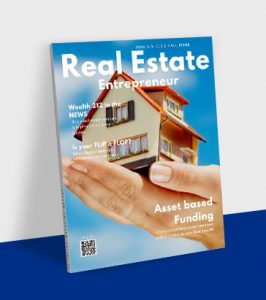
The 1031 Exchange: A Comprehensive Guide for Real Estate Investors
Unveiling the magical world of the 1031 Exchange
Abracadabra, dear reader! Today, we’re going to whisk you away to the enchanting world of the 1031 Exchange – a realm where tax savings and wealth-building opportunities flourish for real estate investors. Savvy investors unlock the power to defer capital gains taxes and reinvest their profits into even more valuable properties in this mystical land.
Why every savvy real estate investor should know about it
If you’re an aspiring or seasoned investor looking for the ultimate real estate spellbook, you’ve come to the right place! The 1031 Exchange is a powerful incantation that can transform your investment portfolio and open doors to a prosperous future. With the right guidance and a sprinkle of patience, you’ll soon understand why every clever investor should have this potent potion in their arsenal. So, buckle up and prepare for a spellbinding journey into the magical world of the 1031 Exchange!
1031 Exchange: A Beginner’s Treasure Map
What on earth is a 1031 Exchange?
Ahoy, mateys! Let’s embark on our treasure hunt by uncovering the hidden gem that is the 1031 Exchange. In the simplest terms, it’s a tax-deferral strategy that allows you, a real estate investor, to sell one property and buy another without immediately paying capital gains taxes. This nifty maneuver is named after Section 1031 of the U.S. tax code, which spells out the magic formula for legally deferring taxes and maximizing your investment potential.
A time-traveling journey through its history
Ready for a trip down memory lane? The 1031 Exchange’s roots go way back to 1921 when the U.S. government first introduced it to stimulate economic growth. Over the years, it has evolved into a powerful tool for investors, helping them grow their wealth by continually trading up properties without getting bogged down by hefty tax bills. So, you see, it’s not just a modern-day marvel; it’s a time-tested tax-saving sorcery!
Types of Exchanges: Pick your adventure!
Now that we’ve unearthed the 1031 Exchange’s origins, let’s embark on a thrilling quest to discover the different types of exchanges that await you. Each one comes with its unique set of challenges and rewards, so choose wisely, adventurer!
-
Simultaneous Exchange: The speed demon
- In this high-speed adventure, you sell your old property and acquire the new one simultaneously. Timing is everything, and you’ll need to be as swift as a cheetah to pull it off. But when done right, it’s a fast track to tax-deferred success!
-
Delayed Exchange: Slow and steady wins the race
- Patience is a virtue in this daring escapade, as you’ll sell your old property first and then have 45 days to identify a new one. But fear not, brave investor, you’ll have a total of 180 days to close the deal. This popular quest offers more flexibility, so take your time and choose wisely.
-
Reverse Exchange: Turning the tables
- This plot twist involves acquiring the new property before selling the old one. It’s a daring move that requires a temporary holding entity to maintain the properties, but with the right strategy and a sprinkle of determination, you’ll flip the script on your real estate adventure!
-
Improvement Exchange: The extreme makeover
- Welcome to the ultimate property transformation challenge! In this thrilling expedition, you’ll use the proceeds from your old property to buy and improve a new one, all within the 180-day exchange period. Roll up your sleeves and get ready to unleash your inner property wizard!
The Golden Ticket: Qualifying for a 1031 Exchange
The secret recipe: Eligible properties
To join the exclusive club of 1031 Exchange wizards, you must first decipher the secret recipe of eligible properties. Fear not, for we shall reveal it to you! Both the property you sell (the “relinquished”) and the one you buy (the “replacement”) must be used for investment, trade, or business purposes. Sorry, personal residences don’t make the cut. But worry not, there’s a world of possibilities with rental properties, commercial buildings, and even vacant land!
Like-kind properties: Finding your property’s long-lost twin
Here’s where the plot thickens: your relinquished and replacement properties must be “like-kind.” No, they don’t need to be identical twins or even share the same zip code. They simply have to be of the same nature or character, regardless of their quality or grade. So, a rental house could be exchanged for a commercial building, and a warehouse could be swapped for an apartment complex. The world is your like-kind oyster!
Holding period requirements: Patience is a virtue
To secure your Golden Ticket, you must also prove that you’re not a fly-by-night investor. The 1031 Exchange requires a minimum holding period for both relinquished and replacement properties, typically at least one year. While there’s no definitive rule, a longer holding period demonstrates your commitment to the investment and reduces the risk of the IRS disqualifying your exchange. Remember, grasshopper, patience pays off!
The primary residence exclusion: Home sweet (non-taxable) home
Alas, not all properties can join the magical realm of the 1031 Exchange. Your primary residence, the castle you call home, is excluded from this tax-deferral wonderland. But fret not, dear homeowner! There’s still a silver lining: you may be eligible for a separate tax break called the primary residence exclusion, which can save you a pretty penny when selling your humble abode. So, even if your home can’t partake in the 1031 festivities, there’s still hope for a tax-saving happily ever after.
Tax Implications: Keep Uncle Sam at Bay
Deferring capital gains tax: Money-saving magic
In the mystical realm of the 1031 Exchange, the most enchanting spell is the ability to defer capital gains tax. When you sell an investment property, you usually owe taxes on the profit you make. But with a successful 1031 Exchange, you can keep Uncle Sam’s hands off your hard-earned gains and reinvest that cash into a new property. It’s like having a magical piggy bank that grows and grows, all while keeping the tax collector at bay.
Depreciation recapture: The tax boomerang
But beware, intrepid investor, for there’s a twist in our tale: depreciation recapture. As you claim depreciation on your property over the years, Uncle Sam keeps tabs on this tax deduction. When you sell, he wants some of that money back. With a 1031 Exchange, you can defer both capital gains tax and depreciation recapture tax, but be prepared for the boomerang effect if you eventually sell without another exchange. It’s essential to strategize wisely to avoid an unpleasant surprise.
Partial exchanges: A mix-and-match affair
In the wondrous world of the 1031 Exchange, flexibility reigns supreme. Enter the partial exchange, where you can defer taxes on only a portion of your property sale. In this mix-and-match affair, you can use some of the proceeds to buy a qualifying replacement property and keep the rest as taxable cash, known as “boot.” This hybrid approach can be a winning strategy if you need funds for other purposes but still want to benefit from tax deferral on a portion of your investment.
Foreign investors: A global tax tango
For our international friends looking to dance the 1031 Exchange tango, a unique set of rules awaits. Foreign investors can participate in this tax-deferral extravaganza, but they must exchange properties within the same country. In other words, U.S. properties must be swapped for other U.S. properties, and the same goes for properties in other nations. It’s a global tax tango that knows no borders, but remember to stay within the dance floor of your chosen country.
The Thrilling 1031 Exchange Process
The property hunt: Finding your perfect match
Embark on the most exhilarating phase of your 1031 Exchange journey: the property hunt! Seek out the perfect replacement property to maximize your investment and tax savings. But beware, for time is of the essence, and the clock is ticking.
-
The 45-day countdown
- From the moment you sell your relinquished property, you have a mere 45 days to identify potential replacements. It’s a race against time, so sharpen your sleuthing skills and get ready to scout the market for your next prize.
-
The three-property rule: A real estate trifecta
- To increase your chances of success, you may identify up to three potential replacement properties, regardless of their total value. It’s like casting a wide net to catch the best fish in the sea. Choose wisely, and you may just reel in a real estate trifecta!
-
The 200% rule: Doubling down on options
- Feeling adventurous? Embrace the 200% rule, which lets you identify more than three properties, as long as their combined value doesn’t exceed double the value of your relinquished property. This daring strategy gives you extra wiggle room to find the ultimate investment.
-
The 95% rule: Go big or go home
- For the boldest of investors, the 95% rule allows you to identify as many properties as you wish, but you must acquire at least 95% of their total value. It’s a high-stakes game with potentially massive rewards. Are you ready to go big or go home?
Your trusty sidekick: Hiring a qualified intermediary
In this thrilling quest, you’ll need a trusty sidekick to help you navigate the complex 1031 Exchange process. Enter the qualified intermediary, your guide, and your confidante in this tax-deferral adventure.
-
The unsung hero
- The qualified intermediary (QI) is an unsung hero, expertly handling your funds and ensuring a smooth, compliant exchange. They’ll keep the IRS at bay, so you can focus on finding your perfect property match.
-
How to find the perfect partner in crime
- Look for a QI with a proven track record, solid reputation, and extensive experience in 1031 Exchanges. Ask for recommendations, read reviews, and interview potential candidates to find your ideal partner in crime.
-
Avoiding the pitfalls: When things go sideways
- An adept QI will help you avoid the pitfalls and perils that can derail your exchange. From missed deadlines to non-compliant properties, your trusty sidekick will steer you clear of trouble and ensure your 1031 Exchange is a rousing success.
The grand finale: Completing the exchange
As you approach the end of this epic journey, there’s one final hurdle to overcome: closing the deal on your replacement property.
-
The 180-day sprint to the finish line
- From the sale of your relinquished property, you have 180 days to seal the deal on your replacement. Time is of the essence, so sprint to the finish line and claim your tax-deferral victory!
-
Sealing the deal and dotting the i’s
- With the help of your QI, ensure all necessary documents are in order and all requirements are met. Once the exchange is complete, revel in your accomplishment and bask in the glow of your newfound tax savings. The 1031 Exchange saga concludes, but your real estate adventure has just begun!
Level Up: Maximizing 1031 Exchange Benefits
Diversifying investments: Don’t put all your eggs in one basket
The 1031 Exchange offers a chance to level up your real estate game by diversifying your investments. As the wise old adage goes, don’t put all your eggs in one basket. By exchanging into properties across different locations, asset types, or industries, you spread your risk and create a more resilient investment portfolio. Embrace the opportunity to explore new horizons and reap the rewards of a well-rounded real estate adventure.
Leveraging Equity: Unlocking hidden treasures
Ahoy, treasure hunter! The 1031 Exchange empowers you to unlock the hidden treasures within your property’s equity. By deferring taxes, you retain more of your hard-earned cash to invest in bigger and better properties. This leverage enables you to amplify your investment power and accelerate your wealth-building journey. So, raise your spyglass and set your sights on new and exciting real estate opportunities!
Upgrading property quality: Trading up for shiny new digs
Who doesn’t love shiny new digs? With the 1031 Exchange, you can trade up from an older, lower-value property to a newer, higher-value one. This upgrade not only increases your investment potential but also provides better cash flow, higher appreciation, and lower maintenance costs. You’ll ascend the real estate ladder and establish a formidable property empire by continually trading up.
Consolidating properties: More bang for your buck
Sometimes, less is more. The 1031 Exchange allows you to consolidate multiple properties into a single, higher-value investment. This strategic move can reduce management headaches, streamline cash flow, and improve overall investment efficiency. By harnessing the power of consolidation, you’ll get more bang for your buck and elevate your real estate investing prowess to new heights.
Common Traps and How to Dodge Them
Deadline disasters: Beat the clock or bust
In the thrilling game of the 1031 Exchange, timing is everything. Missing deadlines can spell doom for your tax-deferral dreams. Plan ahead, act swiftly, and keep a close eye on the calendar to avoid deadline disasters. Enlist the help of your trusty sidekick, the qualified intermediary, to ensure you stay on track and beat the clock. Remember, it’s a race against time, so hustle, hustle, hustle!
Documentation Dilemmas: A paper trail to Success
A well-documented 1031 Exchange is the key to success. Documentation dilemmas can lead to IRS scrutiny and, ultimately, disqualification of your exchange. To navigate this perilous path, work closely with your qualified intermediary and legal advisors to ensure all forms, contracts, and records are accurate, complete, and submitted on time. Forge a solid paper trail and pave the way to a successful and compliant exchange.
Non-compliant properties: The forbidden fruit
Beware the allure of the forbidden fruit: non-compliant properties that don’t meet 1031 Exchange criteria. To dodge this trap, be vigilant in your property search, and verify that potential replacements meet the like-kind and investment-use requirements. Consult your qualified intermediary or legal counsel to validate your choices, and steer clear of properties that could jeopardize your exchange.
Proceeds pitfalls: Spending wisely
In the enchanted world of the 1031 Exchange, misusing your proceeds can lead to a tax-deferral downfall. To avoid this pitfall, ensure that all funds are held securely by your qualified intermediary until they’re used to acquire the replacement property. Resist the temptation to spend the proceeds on unrelated expenses or luxuries. Keep your eyes on the prize, and your tax-deferral dreams will become a reality.
The Future Awaits: Recent Changes and Trends
Shifting sands: The ever-changing tax landscape
In the vast desert of real estate investing, the tax landscape is like shifting sands, constantly changing and evolving. To stay ahead of the game, keep a keen eye on new tax laws, regulations, and trends that could impact your 1031 Exchange strategy. By staying informed and adapting to change, you’ll be better equipped to navigate the unpredictable dunes of the tax world and safeguard your hard-earned wealth.
Economic factors: Reading the real estate tea leaves
The world of real estate is influenced by a multitude of economic factors, from interest rates to market cycles. To thrive in this dynamic environment, learn to read the real estate tea leaves and anticipate how these factors may affect your 1031 Exchange endeavors. By understanding the broader economic context, you’ll be better prepared to make informed decisions and steer your investment ship through both calm and stormy seas.
Crystal ball gazing: Potential future legislation
No one can predict the future, but it’s always wise to keep an ear to the ground for potential legislative changes that could impact the 1031 Exchange. As the political winds shift and new policies emerge, stay informed and be prepared to adjust your strategy accordingly. By engaging in a little crystal ball gazing, you’ll be ready to adapt to whatever the future holds and ensure your real estate investments continue to flourish in the ever-changing landscape of tax laws and regulations.
In conclusion, the 1031 Exchange is a real estate investor’s best friend, offering a wealth of opportunities to level up your investment game. By staying informed, seeking expert advice, and navigating the ever-changing landscape of tax laws and regulations, you can unlock the full potential of this powerful tax-deferral tool. So, embrace the magic of the 1031 Exchange, and join us on this thrilling journey by subscribing to our newsletter, The Boiling Point, where we’ll continue to explore the exciting world of real estate investing. Together, let’s discover hidden treasures, build wealth, and unlock the limitless potential that lies within this extraordinary realm. Onward, intrepid investors!




